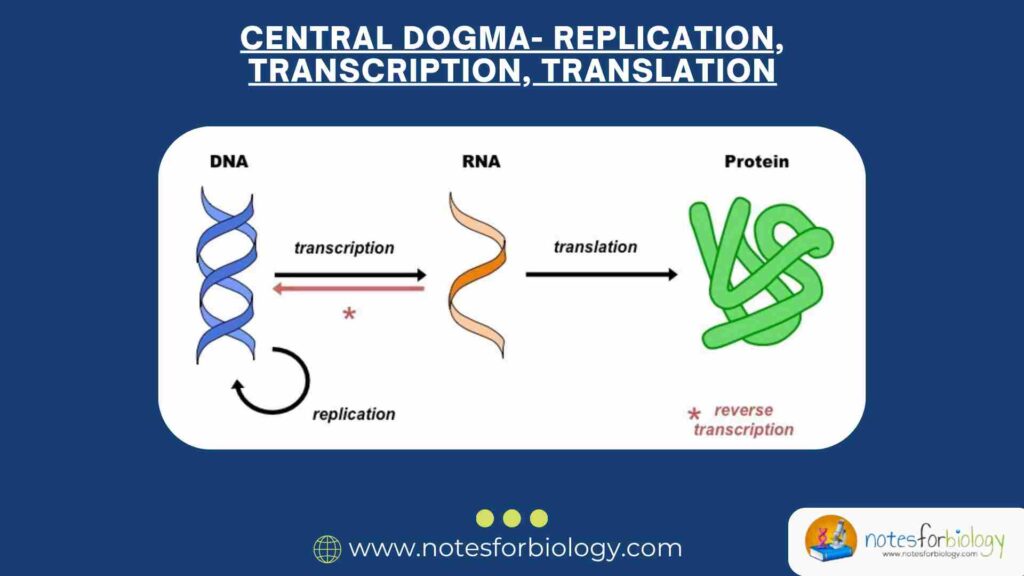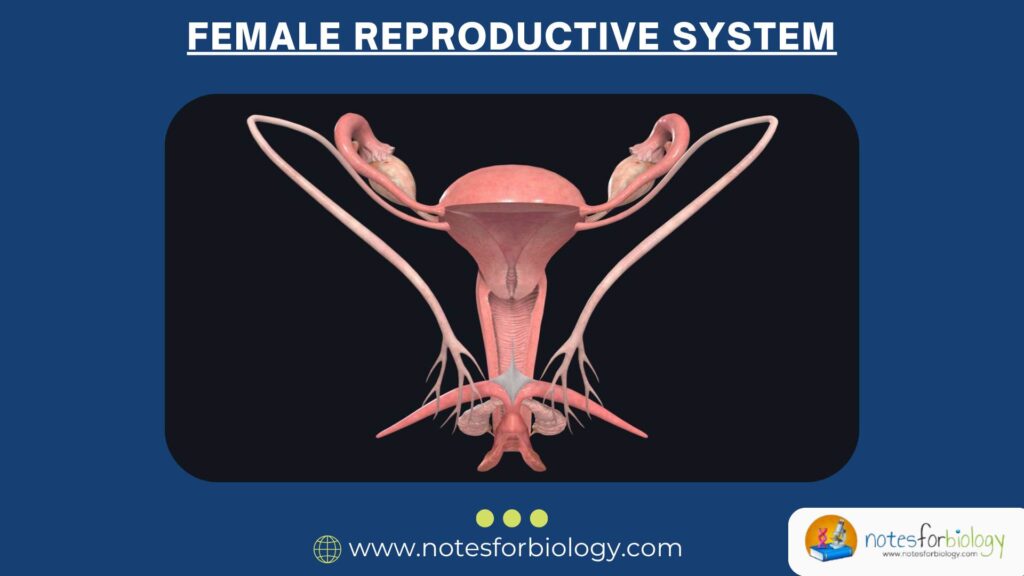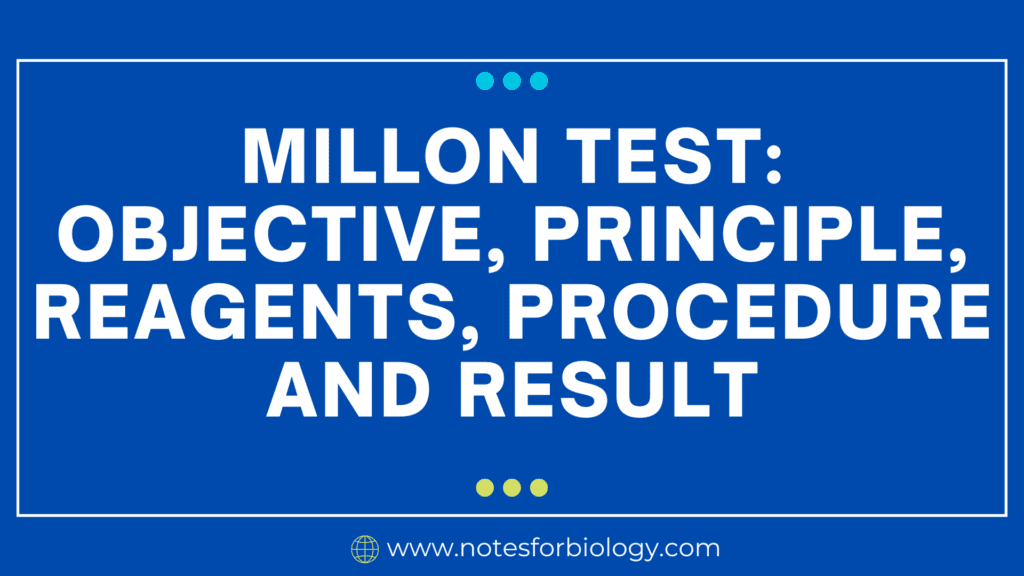Introduction
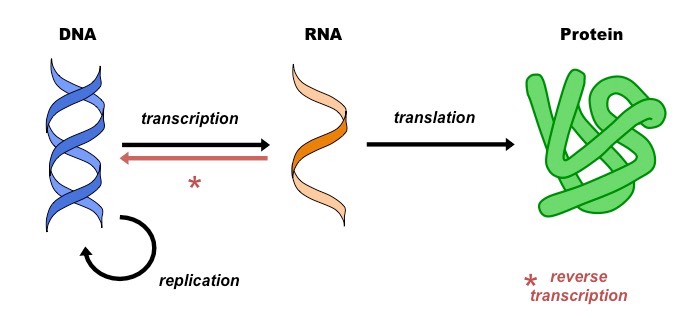
The Central Dogma of Molecular Biology is a fundamental concept that explains how genetic information flows within a biological system. This idea was first proposed by Francis Crick in 1958. According to the central dogma, genetic information stored in DNA is first copied into RNA through a process called transcription, and then this RNA is used to make proteins through a process called translation. This process is essential for the proper functioning of all living organisms, as proteins are the molecules that perform most cellular tasks.
The central dogma can be summarized in three major steps:
- DNA Replication
- Transcription (DNA to RNA)
- Translation (RNA to Protein)
Summary of Central Dogma
- DNA stores the genetic blueprint of life and copies itself through replication to pass information to new cells.
- Through transcription, DNA’s instructions are converted into messenger RNA, creating a working copy for protein production.
- Finally, translation reads the mRNA code to build proteins, the vital molecules that carry out all cellular functions.
Table of Contents
1. DNA Replication
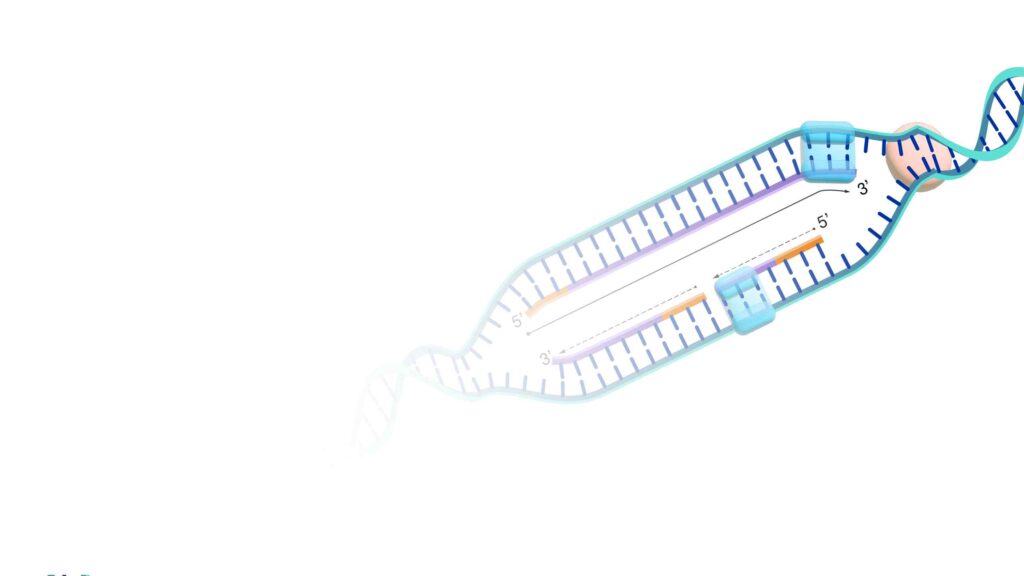
Definition
DNA replication is the biological process by which a cell makes an exact copy of its DNA. This happens before a cell divides so that each new cell receives the same set of genetic instructions.
Purpose of Replication
The main goal of replication is to ensure that each daughter cell has an identical copy of the DNA as the parent cell. This helps in maintaining genetic consistency across generations of cells.
Where and When It Happens
DNA replication takes place in the nucleus of eukaryotic cells and in the cytoplasm of prokaryotic cells. It occurs during the S-phase of the cell cycle, just before a cell divides.
Steps Involved in DNA Replication
1. Unwinding of DNA Strand
- The double helix structure of DNA is unwound by an enzyme called helicase.
- This creates a replication fork where the two strands are separated.
2. Binding of RNA Primers
An enzyme called primase lays down a short RNA primer. This primer acts as a starting point for the new DNA strand.
3. Addition of Nucleotides
- DNA polymerase adds new nucleotides that are complementary to the original DNA strand.
- On one strand (leading strand), nucleotides are added continuously.
- On the other strand (lagging strand), nucleotides are added in short segments called Okazaki fragments.
4. Joining of Fragments
An enzyme called DNA ligase joins the Okazaki fragments on the lagging strand to form a continuous DNA strand.
5. Proofreading and Correction
DNA polymerase also checks for errors during replication and corrects them to ensure accuracy.
Key Characteristics of DNA Replication
- DNA replication is semi-conservative. This means that each new DNA molecule has one old strand and one new strand.
- This process is highly accurate and essential for genetic stability.
2. Transcription
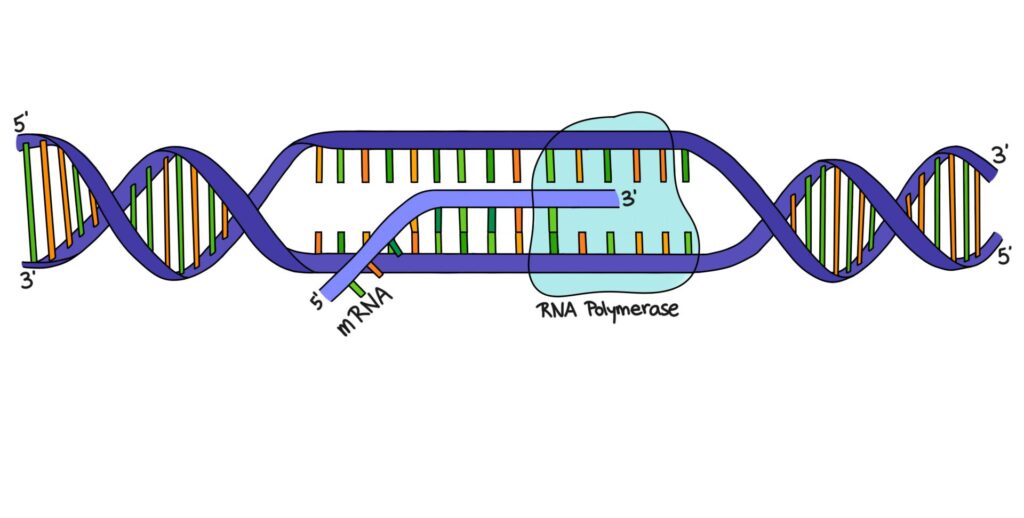
Definition
Transcription is the process in which a specific segment of DNA is copied into RNA, particularly messenger RNA (mRNA). This RNA serves as a temporary copy of genetic instructions needed to make proteins.
Purpose of Transcription
Transcription allows the cell to use DNA information without damaging the original DNA. By creating an RNA copy, the cell ensures that the instructions can be used many times to produce proteins.
Where It Happens
In eukaryotic cells, transcription takes place inside the nucleus. In prokaryotic cells, it occurs in the cytoplasm.
Types of RNA Produced
- Messenger RNA (mRNA): Carries the genetic code from DNA to the ribosome.
- Transfer RNA (tRNA): Helps in assembling amino acids during translation.
- Ribosomal RNA (rRNA): Forms part of the ribosome structure.
- Other RNAs: Such as small nuclear RNA (snRNA) and microRNA (miRNA), which help in gene regulation.
Steps in Transcription
Initiation
- RNA polymerase binds to a specific sequence on DNA called the promoter.
- The DNA unwinds, and the transcription begins.
Elongation
- RNA polymerase moves along the DNA template strand.
- It adds RNA nucleotides that are complementary to the DNA strand.
- Unlike DNA, RNA has uracil instead of thymine.
Termination
- When RNA polymerase reaches a stop signal (terminator), the RNA strand is released.
- The DNA re-forms its double helix structure.
Post-Transcriptional Modifications (in Eukaryotes)
1. 5′ Capping
A cap is added to the beginning of the RNA to protect it and help in its recognition by ribosomes.
2. Poly-A Tail Addition
A chain of adenine nucleotides is added to the end of the RNA to prevent damage.
3. Splicing
Introns (non-coding parts) are removed, and exons (coding parts) are joined to form mature mRNA.
Final Product
A mature mRNA strand is formed that carries the genetic instructions from DNA to the ribosomes in the cytoplasm for protein synthesis.
3. Translation
Definition
Translation is the process by which the information in mRNA is decoded to build a specific sequence of amino acids, which are then folded into functional proteins.
Purpose of Translation
Proteins are the main functional and structural molecules in a cell. Translation is essential because it turns the genetic code carried by mRNA into actual working proteins.
Where It Happens
Translation occurs in the cytoplasm, where ribosomes read the mRNA.
Key Components Involved
- mRNA: Carries the code from DNA.
- Ribosomes: The sites where proteins are built.
- tRNA: Delivers amino acids to the ribosome.
- Amino Acids: The building blocks of proteins.
- Enzymes: Assist in forming bonds between amino acids.
Steps in Translation
Initiation
- The ribosome binds to the mRNA at the start codon (AUG).
- The first tRNA, carrying the amino acid methionine, binds to the mRNA.
Elongation
- The ribosome moves along the mRNA, reading codons (three-base sequences).
- Each codon matches with a specific tRNA carrying the appropriate amino acid.
- Amino acids are linked together by peptide bonds to form a polypeptide chain.
Termination
- When the ribosome reaches a stop codon (UAA, UAG, or UGA), translation stops.
- The ribosome releases the newly formed polypeptide chain.
Post-Translational Modifications
- The protein may be folded into its functional shape.
- It may also undergo chemical modifications such as phosphorylation or glycosylation.
Summary Table
| Process | Input | Output | Location | Key Molecules/Enzymes |
|---|---|---|---|---|
| Replication | DNA | New DNA | Nucleus | DNA Polymerase, Helicase, Ligase |
| Transcription | DNA | RNA | Nucleus | RNA Polymerase |
| Translation | mRNA | Protein | Cytoplasm | Ribosome, tRNA |
Importance of the Central Dogma
- Maintains Genetic Information
- Ensures the correct genetic instructions are passed to new cells.
- Allows Gene Expression
- Genes are turned on or off through transcription and translation.
- Builds Proteins
- Proteins perform essential roles like enzymatic activity, structural support, transport, and signaling.
- Basis for Biotechnology
- Understanding the central dogma has allowed scientists to develop genetic engineering, DNA testing, and mRNA vaccines.
Exceptions to the Central Dogma
Although the central dogma generally flows from DNA to RNA to Protein, there are some exceptions:
- Reverse Transcription: Some viruses (like HIV) can convert RNA back into DNA using an enzyme called reverse transcriptase.
- RNA Replication: Some RNA viruses replicate their genetic material directly from RNA.
- Non-Coding RNA: Not all RNA is used to make proteins. Some RNAs function in gene regulation and other cellular processes.
Conclusion
The Central Dogma of Molecular Biology is the key to understanding how genetic information is stored, used, and passed on in living organisms. It explains how DNA is faithfully copied during replication, how genes are expressed through transcription, and how proteins are made by translation. These processes are interconnected and crucial for life. Despite a few exceptions, the concept remains a fundamental principle of molecular biology. Mastering these concepts is essential for understanding genetics, biotechnology, and medicine.
Frequently Asked Questions (FAQs)
What is the Central Dogma of Molecular Biology?
The Central Dogma describes the flow of genetic information in cells: DNA → RNA → Protein. It explains how genetic instructions are stored in DNA, transcribed into RNA, and then translated into proteins that perform cellular functions.
What are the main processes involved in the Central Dogma?
The three key processes are:
Replication: DNA makes an exact copy of itself.
Transcription: DNA is transcribed into messenger RNA (mRNA).
Translation: mRNA is translated into a specific sequence of amino acids to form a protein.
Why is DNA replication important?
DNA replication ensures that each new cell receives an exact copy of the genetic material, maintaining genetic consistency across generations of cells.
Related Articles

